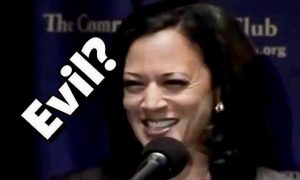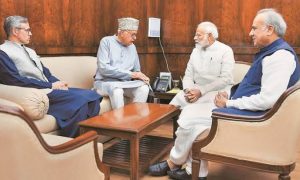It was in last quarter of the year 2014 that assembly elections were held in Jammu and Kashmir were held last. No party could win a clear majority as has been the trend for past two decades since 2002 when the National Conference led by Farooq Abdullah had lost its majority. In 2008 also, no single party had won a majority and it was coalition governments that ruled the state, now a Union Territory (UT). It seems the trend is well established now and no single party is likely to emerge a clear winner with 46/90 seats on its own this year also when elections are held after a few months.
Much discussions and debate happened after Delimitation Commission headed by Justice (retired) Ranjana Prakash Desai unveiled her tentative recommendations. The draft plans of the commission talked about adding six assembly segments to the already existing 37 segments in the Jammu region, taking the tally to 43. The same plans also talked of adding a lone assembly seat to the existing 46 in Kashmir region, taking it to 47.
With Jammu likely to have 43 seats, and Kashmir 47, a gap of four only, the balance of power is expected to tilt towards Jammu. It will definitely be better than earlier days when Jammu had nine seats lesser than Kashmir (37 and 46). The draft recommendations caused a furore in Kashmir, with most leaders saying it was not acceptable to them, with Mehbooba Mufti, Omar Abdullah, Altaf Bukhari and Sajad Lone all lining up against the Desai commission.
In Jammu, several leaders said that the draft recommendations were disappointing and that the commission should have applied Representation of Peoples Act, 1951, uniformly to carve out 90 new assembly segments. Most Kashmiri leaders accused the commission of kowtowing to the BJP agenda of disempowering Kashmir, and propping up Jammu. The Kashmiri leaders said that according to 2011 census, the population of Kashmir region was over 15 lakh more than the Jammu region. On this basis alone, population as sole criteria, delimitation should have been carried out and more seats given to Kashmir.
Leaders from the Jammu region allege that the 2011 census data was fudged heavily in favour of Kashmir, and the census figures were not authentic. Ankur Sharma of Ikkjutt Jammu, which got recognition as a political party from Election Commission recently, is foremost among those questioning the data. He has been asking for a long time that any new delimitation in J&K should happen on the basis of Census 2021 only. No delimitation and no elections is what he prescribes as a solution which will empower Jammu truly.
What is the ground reality? Is it possible to analyse 2014, 2008, 2002 and 1996 assembly elections to see and discern if any clear pattern/s regarding population, voters and other relevant data emerge? Perhaps yes. It needs to be stated here clearly that all data sets regarding these elections have been collated from official website of the Election Commission of India.
In 2014, there were 37,59,108 voters in Kashmir region who elected 46 MLAs, and the average voters per MLA thus comes out to 81,720. In the Jammu region, there were 33,39,849 voters and they elected 37 MLAs, and the average voters per MLA for the Jammu region thus come to 90,266. On an average, an assembly segment in Jammu was thus had 90,266-81,720= 8,546 voters more than an assembly segment in Kashmir.
Incidentally, the Jammu region spread over 26,293 square kilometres is much larger geographically than Kashmir which is only 15,948 square kilometres. Thus, the average geographical size of an assembly segment in Jammu is around 711 square kilometres (26,293/37=710.62) and the average geographical spread in Kashmir is barely 347 square kilometres (15,948/46= 346.69).
We can similarly analyse poll data of assembly polls held in 2008, 2002 and 1996 also. It needs to be mentioned that delimitation of assembly segments in J&K had happened in 1995 and that is why we are picking up data of all four elections held since then.
During 2008 assembly elections, there were there were 32,36,909 voters in Kashmir and they elected 46 MLAs and that comes to 70,368 voters per MLA. There were 30,86,033 voters in the Jammu region and they elected 37 MLAs and on an average one MLA was elected for 83,406 voters.
During 2002 assembly elections, in the Kashmir valley, there were 28,84,842 voters and they elected 46 MLAs and that comes to 62,714 voters per MLA. On the other hand, there were 31,06,114 voters in the Jammu region and they elected 37 MLAs and on an average one MLA was elected for 83,949 voters.
In the assembly election held in 1996, there were 23,71,556 voters and they elected 46 MLAs and that comes to 51,556 voters per MLA. During the same assembly elections, there were 22,40,951 voters in the Jammu region and they elected 37 MLAs and on an average one MLA was elected for 60,556 voters.
To sum up, we observe wide disparities in the number of voters per MLA in the two regions. In 1996, on an average one MLA was elected by 51,556 voters in Kashmir and his counterpart in Jammu was elected by 60,556 voters. In 2002, on an average, one MLA was elected by 62,714 voters in Kashmir and a Jammu MLA represented 83,949 voters. In 2008, on an average a member of the legislative assembly represented 70,368 voters in Kashmir and 83,406 voters in the Jammu region. In 2014, the number of voters per MLA in Jammu touched 90,266 while as in Kashmir it was only 81,270 voters.
This also means that even in 2014, the number of voters per MLA in Kashmir (81,270) was less than what it was in Jammu in 2008 (it was 83,406 then) or even 12 years before that in 2002 (83,949 voters per MLA). It looks like even after allotment of six more seats to Jammu region, the gap of voters per MLA may not get bridged.
— Sant Kumar Sharma









